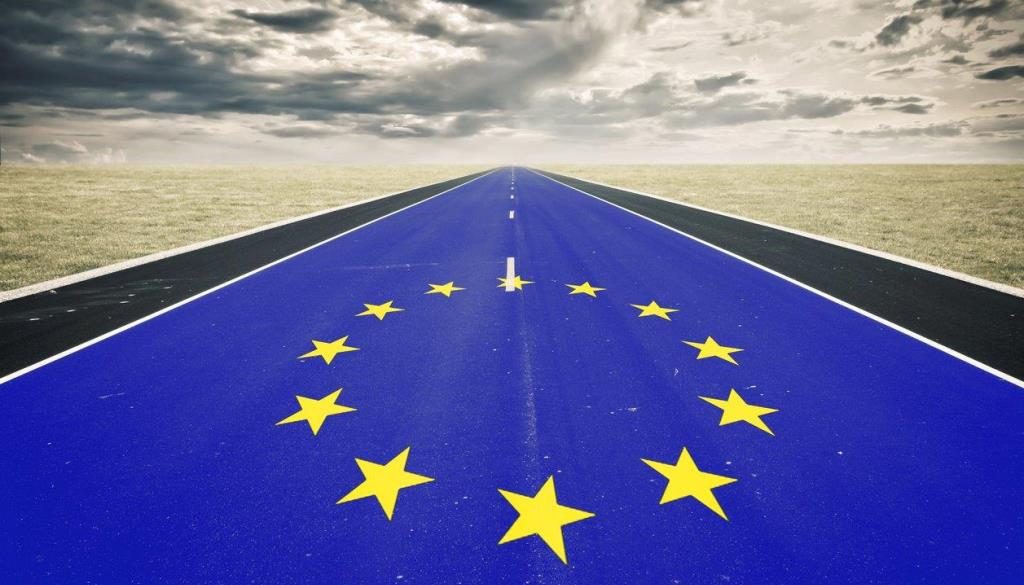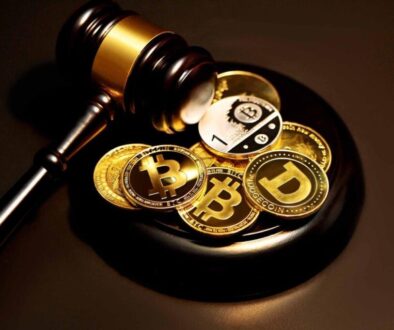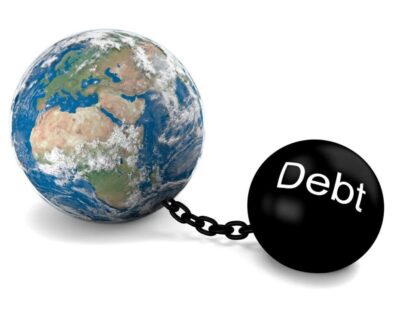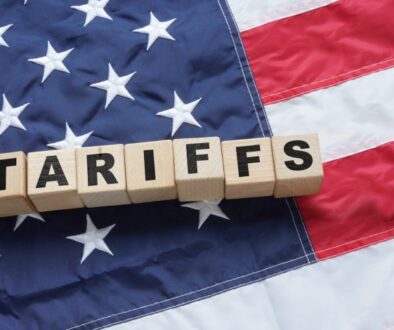Introduction
In this article, we present a framework for the valuation of the European Union (EU) with the aim to identify where the EU is standing today. The article starts with a brief overview of EU history, structure and institutions, and how the EU work. Following this overview, the proposed EU valuation framework is described. The valuation framework is four dimensional. The dimensions are: 1) EU economy and growth sectors; 2) EU technology capability; 3) EU social model; and 4) EU in the world. Each dimension consists of several components/key areas that are overviewed as well. The article concludes with future work on SWOT (Strength, Weaknesses, Opportunities and Threats) analysis to assess each framework dimension and finally evaluate where the EU is standing today.
EU Historical Evolution
Reference to the European Commission website, the European Union (EU) is a unique economic and political union between 27 European countries. The predecessor of the EU was created in the aftermath of the Second World War to foster economic cooperation. The European Economic Community was created in 1958 with the initial aim of increasing economic cooperation between six countries: Belgium, Germany, France, Italy, Luxembourg and the Netherlands.
Since then, 22 more countries joined (and the United Kingdom left the EU in 2020) and a huge single market (also known as the ‘internal’ market) has been created and continues to develop towards its full potential.
What began as a purely economic union has evolved into an organisation spanning many different policy areas, from climate, environment and health to external relations and security, justice and migration.
The EU has delivered more than half a century of peace, stability and prosperity, helped raise living standards and launched a single European currency: the euro.
Thanks to the abolition of border controls between EU countries, people can travel freely throughout most of the continent. And it has become much easier to live and work in another country in Europe. All EU citizens have the right and freedom to choose in which EU country they want to study, work or retire. Every EU country must treat EU citizens in exactly the same way as its own citizens when it comes to matters of employment, social security and tax.
The EU’s main economic engine is the single market. It enables most goods, services, money and people to move freely. The EU aims to develop this huge resource to other areas like energy, knowledge and capital markets to ensure that Europeans can draw the maximum benefit from it.
The EU remains focused on making its governing institutions more transparent and democratic. Decisions are taken as openly as possible and as closely as possible to the citizen. More powers have been given to the directly elected European Parliament, while national parliaments play a greater role, working alongside the European institutions.
The EU is governed by the principle of representative democracy, with citizens directly represented at EU level in the European Parliament and Member States represented in the European Council and the Council of the EU.
European citizens are encouraged to contribute to the democratic life of the EU by giving their views on EU policies or by suggesting improvements to existing laws and policies. The European Citizens’ Initiative empowers citizens to have a greater say on EU policies that affect their lives. Citizens can also submit complaints and enquiries concerning the application of EU law.
The European Union is founded on the values of respect for human dignity, freedom, democracy, equality, the rule of law and respect for human rights, including the rights of persons belonging to minorities. These values are common to the Member States in a society which pluralism, non-discrimination, tolerance, justice, solidarity and equality between women and men prevail. These values are an integral part of the European way of life.
Human dignity must be respected, protected and constitutes the real basis of fundamental rights.
Being a European citizen also means enjoying political rights. Every adult EU citizen has the right to stand as a candidate and to vote in elections to the European Parliament, whether in their country of residence or country of origin.
The EU is based on the rule of law. Everything the EU does is founded on treaties, which are voluntarily and democratically agreed by its member countries. Law and justice are upheld by an independent judiciary.
Human rights are protected by the EU Charter of Fundamental Rights. These cover the right to be free from discrimination on the basis of sex, racial or ethnic origin, religion or belief, disability, age or sexual orientation, the right to the protection of personal data, and the right to get access to justice.
EU STRUCTURE and institutions
The institutions of the European Union are the principal decision-making bodies of the European Union (EU). They are, as listed in Article 13 of the Treaty on European Union. These include:
- The European Parliament, which represents the EU’s citizens and is directly elected by them;
- The European Council, which consists of the Heads of State or Government of the EU Member States;
- The Council, (also called the Council of the European Union) which represents the governments of the EU Member States; and
- The European Commission, which represents the interests of the EU as a whole.
- The national parliaments of the Member States also play a role in taking decisions and making laws. Generally it is the European Commission that proposes new laws and the European Parliament and the Council that adopt them.
- The advisory bodies (the European Economic and Social Committee and the European Committee of the Regions) as well as the national parliaments are involved in the process by providing their opinions on the proposals, mainly from the perspective of the principles of subsidiarity and proportionality. Subsidiarity means that, except in the areas where it has exclusive powers, the EU only acts where action will be more effective at EU level than at national level. Under the principle of proportionality, the EU’s action must be limited to what is necessary to achieve the objectives of the EU treaties.
- The Court of Justice of the European Union,
- The European Central Bank and
- The European Court of Auditors
EU treaties
Every action taken by the EU is founded on treaties that have been approved voluntarily and democratically by all EU countries. The treaties lay down the objectives of the European Union, and set out the rules for how the EU institutions operate, how decisions are made and the relationship between the EU and its Member States.
How the European Union works
The European Parliament Fact Sheet on the European Union describes how the European Union works. This covers European legislation, European integration, the European Union’s legal system and decision-making procedures, and the EU Financing as follows:
European legislation
The European Union has its own legislature and executive, as well as an independent judiciary and a central bank. These are supported and complemented by a set of institutions and bodies, the powers conferred on which derive from the founding Treaties. The Union’s powers have evolved considerably over the years through the successive Treaties, as have its decision-making procedures, which Parliament and the Council now follow when legislating on most EU policies. The Union also has its own budget with which to achieve its objectives. The Lisbon Treaty gave Parliament an equal say with the Council to decide on the entire EU budget and the multiannual financial framework.
European integration
The Historical development of European integration can be traced as follows:
- The First Treaties
- Developments up to the Single European Act
- The Maastricht and Amsterdam Treaties
- The Treaty of Nice and the Convention on the Future of Europe
- The Treaty of Lisbon
European Union legal system and decision-making
The European Union’s legal system and decision-making procedures include:
- Sources and scope of European Union law
- The principle of subsidiarity
- Supranational decision-making procedures
- Intergovernmental decision-making procedures
- The budgetary procedure
EU Financing
The EU budget is financed in large part (over 90%) from own resources. Annual revenue must completely cover annual expenditure. The system of own resources is decided by the Council on the basis of unanimity, having regard to the opinion of the European Parliament, and needs to be ratified by the Member States.
EU VALUATION FRAMEWORK
We hereby propose an EU evaluation framework. The framework is four dimensional and assesses the EU based on:
- EU economy and growth sectors
- EU technology capability
- EU Social Model
- EU in the world
DIMENSION 1. EU economy and growth sectors
This section describes the first dimension of the EU valuation framework, namely EU economy and growth sectors.
EU ECONOMIC MODEL
The EU economic model consists of the EU single market, consumer protection, competition, taxation, customs, business and industry, finance, and the Euro, EU budget and Fraud prevention.
Single market
The single market is one of the EU’s greatest achievements. It fuels growth and jobs and makes everyday life easier for people and businesses.
Thanks to the single market (sometimes also called the internal market) people, goods, services and money can move around the EU almost as freely as within a single country. EU citizens can study, live, shop, work and retire in any EU country, and enjoy products from all over Europe.
Consumer protection
EU consumer policy safeguards consumers’ rights, ensures products are safe, helps people make informed choices when they buy goods and services, and offers tools to solve problems if something goes wrong.
Competition
EU competition rules aim to ensure that all companies compete fairly and equally in the single market to the benefit of consumers, businesses and the European economy as a whole.
Taxation
While national governments are responsible for setting tax rates and collecting taxes, the EU ensures that people or businesses from another Member State are not discriminated against and that taxes do not hinder the EU’s single market.
Customs
The EU’s customs union means that all Member States are working together to ensure that goods imported into the EU circulate freely and that they are safe for people, for animals and for the environment.
Business and industry
The EU aims to make industry and business more competitive and to promote jobs and growth through a business-friendly environment.
The EU’s business and industrial policy is designed to improve the business environment, promote a climate of entrepreneurship and job creation and give small businesses easier access to finance and markets. Small and medium-sized enterprises represent 99% of all businesses in the EU, providing two thirds of total private-sector employment.
Finance and the euro
Economic and monetary union and the euro provide the common foundations for greater stability, growth and prosperity across Europe.
Economic and monetary union unites and integrates EU economies through coordinated economic and fiscal policies, a common monetary policy and a common currency, the euro. It is a powerful tool to deliver jobs, growth, social fairness and financial stability.
The EU is working to ensure the financial system remains strong and secure and that the single market offers consumers and businesses the financial products they need.
EU Budget
The EU budget helps to deliver on the things that matter to Europeans. By pooling resources at EU level, member states can achieve more than they could by acting alone.
Fraud prevention
The European Anti-Fraud Office ensures taxpayers’ money is put to the best possible use by investigating cases of fraud, corruption and illegal activities involving EU funds.
EU GROWTH SECTORS
The considered EU growth sectors are health, climate change and the environment, transport and travel, food and framing, oceans and fisheries.
Health
Health is a major priority for the European Union. The EU’s health policy complements Members States’ policies to ensure that everyone living in the EU is protected from serious cross-border health threats and has access to quality healthcare.
While the organisation of healthcare is the responsibility of individual Member States, the EU complements national policies to reach shared objectives. The EU’s health policy focuses on tackling serious EU-wide health threats, preventing diseases and ensuring an equal chance of good health and quality healthcare for all.
The EU’s ambition is to ensure accessible, effective and resilient health systems in the EU. The EU’s work includes action on vaccination (including against COVID-19), fighting antimicrobial resistance, and preventing and limiting pandemics and other infectious diseases.
Climate change and the environment
European Green Deal.
The European Green Deal is the EU’s action plan to make Europe the first climate-neutral continent. It is a growth strategy that aims to create, by 2050, a modern, resource-efficient and competitive European economy with no net emissions of greenhouse gases.
Reaching this target means creating a clean, circular economy, restoring biodiversity and cutting pollution. It requires action in all sectors of the economy, including:
- Investing in environmentally friendly technologies;
- Supporting innovation in industry;
- Cleaner, cheaper and healthier forms of private and public transport;
- Decarbonising the energy sector;
- Ensuring buildings are more efficient;
- Working with international partners to improve global environmental standards.
Environment
The EU has some of the world’s highest environmental standards, which protect nature and people’s quality of life, green the economy and ensure careful use of natural resources.
EU environment policy plays a crucial role in supporting the European Green Deal in accelerating the transition to a climate-neutral, resource-efficient and regenerative economy that gives back to the planet more than it takes.
The EU is striving to reduce the environmental impacts of the production and consumption of goods and services.
The new Circular Economy Action Plan, one of the main blocks of the Green Deal, aims to make sustainable products the norm in the EU.
Energy
The EU’s energy policy aims to ensure a secure, competitive and affordable supply of energy, while meeting EU climate targets.
Each Member State defines its own energy mix, but the coordination of rules at EU level allows them to meet common political objectives.
Transport and travel
The EU’s transport policy helps keep the economy moving by developing modern infrastructure that makes journeys quicker and safer, while promoting sustainable and digital solutions.
Food and farming
The common agricultural policy ensures a stable food supply produced in a sustainable way and at affordable prices. It also helps tackle climate change, manage natural resources and support jobs and growth in rural areas
Oceans and fisheries
EU oceans produce most of the oxygen, regulate the weather and climate, and are home to the majority of the planet’s species. They are also important drivers of the European economy, providing food, jobs, transport and recreation. The EU works to protect its seas and oceans and to ensure that they remain environmentally and economically sustainable for future generations.
The EU’s Sustainable Blue Economy strategy seeks to harness the potential for sustainable growth in the marine and maritime sectors as a whole.
DIMENSION 2. EU technology CAPABILITY
EU technology capability is assessed based on research and innovation, digital transformation, and EU initiatives towards a safer internet.
Research and innovation
The €95.5 billion research and innovation programme Horizon Europe is helping to boost jobs and growth and tackle some of the biggest EU challenges.
Digital transformation
The EU is working to ensure that digital technologies work for everyone, while helping to achieve climate neutrality by 2050, and securing Europe’s place as a leader in the digital economy.
Digital technologies have never been more important in people lives. During the COVID-19 crisis, they have kept people connected and businesses working, and have proved essential for education and training. They are also crucial to fighting climate change, including through smart energy and transport systems.
EU digital transformation helped in:
- Putting an end to additional roaming charges when people use their mobile devices when travelling in the EU;
- Providing access to online content when traveling in the EU;
- Laying down strict EU rules on personal data protection;
- Providing free public Wi-Fi hotspots across the EU;
- Devising new rules to ensure better access to public websites for people with disabilities;
- Taking actions to fight fake news and online disinformation.
The EU digital strategy aims to deliver digital solutions that benefit people, businesses and the planet. It focuses on three main objectives: technology that works for people, a fair and competitive economy and an open, democratic and sustainable society.
The European Commission has proposed a comprehensive set of rules for online platforms operating in Europe to protect the fundamental rights of citizens online, to address online harms and to foster innovation. Beyond that, the strategy also covers everything from cybersecurity and data to digital education and democracy. The proposed Digital Compass translates Europe’s goals for 2030 into concrete targets. Safeguarding EU values and people’s fundamental rights and security is a key element.
The Digital Europe programme, with over €7.5 billion in funding between 2021 and 2027, will boost investments in areas such as supercomputing, artificial intelligence and digital skills. It will also ensure wide use of digital technologies across the economy and society, including through digital innovation hubs.
A safer internet
The EU has the strictest data protection and privacy rules in the world. This ensures that the online environment is safe and fair for citizens and businesses alike and protect people, in particular children, from illegal and harmful content.
DIMENSION 3. EU social model
The EU social model is described in terms of social justice and jobs, values and rights, rule of law and security, European democracy, education, culture, youth and sports.
Social justice and jobs
Employment and social affairs
The EU contributes to the creation of more and better jobs across Europe and aims for fair social standards for all, including through the €99.3 billion European Social Fund Plus for the 2021—2027 period.
Regional policy
Regional policy targets all regions and cities in the European Union in order to support job creation, business competitiveness, economic growth and sustainable development, and to improve citizens’ quality of life.
Values and rights, rule of law, security
Justice and fundamental rights
The EU guarantees a range of fundamental rights for its citizens and protects them from discrimination, while the EU’s common justice area helps solve cross-border legal problems for both citizens and businesses.
European democracy
Migration and asylum
The EU’s common migration and asylum policy helps Europe deal with migration challenges in an effective manner.
Borders and security
The European Union is working towards establishing a security union, making Europe more secure by fighting terrorism and serious crime and by strengthening Europe’s external borders.
Education, culture, youth and sport
Education and training
The EU helps improve the quality of education by encouraging cooperation between member states and by complementing national actions. The EU provides opportunities for people of all ages and enables young people in particular to study, train, gain work experience or volunteer abroad.
Youth
Through its youth policies and programmes the EU aims to make sure young people can participate fully in all areas of society and to give them more opportunities in education and the job market.
Culture and media
The EU works to preserve Europe’s shared cultural heritage and make it accessible to all. It supports the arts and helps cultural and creative industries to thrive, specifically through the Creative Europe programme.
Sport
The EU promotes the health benefits and positive values associated with sport, supports cooperation between policymakers and dialogue with sports organisations and tackles problems such as doping, match-fixing and violence.
Dimension 4. eU in the world
The EU role in the world is assessed based on international partnerships, EU neighbourhood and enlargement policy, international trade, humanitarian and civil protection, foreign affairs and security policy.
International partnerships
Partnerships and development cooperation lie at the heart of the EU’s foreign policy. The EU and its member states are the world’s largest provider of development aid.
EU neighbourhood and enlargement
The EU encourages stable democracies and economies in neighbouring countries by building tailor-made partnerships based on shared interests and cooperation at bilateral or regional levels.
Trade
The EU champions free trade. 35 million European jobs are, directly or indirectly, supported by trade with countries outside the EU. The EU fights for open, rules-based markets, a level playing field and the highest international standards across the world.
The EU is the world’s largest trading power and one of the most open economies. A third of the EU’s gross domestic product depends on trade.
Humanitarian aid and civil protection
The EU, together with its member states, is the world’s leading humanitarian aid donor, providing and coordinating relief assistance to people in areas hit by disasters in Europe and around the globe.
Foreign affairs and security policy
The EU’s foreign and security policy enables it to speak and act in world affairs, allowing the member states to tackle challenges they cannot solve alone and ensuring the security and prosperity of EU citizens.
Conclusion and future work
This article described a proposed four dimensions framework to assess where the EU is standing today. Future articles will focus in greater depth on SWOT (Strength, Weaknesses, Opportunities and Threats) analysis to assess each of the four framework dimensions. A decision matrix will then be adopted to come up with the final assessment of where the EU is standing today.
Foreign affairs and security policy
The EU’s foreign and security policy enables it to speak and act in world affairs, allowing the member states to tackle challenges they cannot solve alone and ensuring the security and prosperity of EU citizens.
Conclusion and future work
This article described a proposed four dimensions framework to assess where the EU is standing today. Future articles will focus in greater depth on SWOT (Strength, Weaknesses, Opportunities and Threats) analysis to assess each of the four framework dimensions. A decision matrix will then be adopted to come up with the final assessment of where the EU is standing today.



